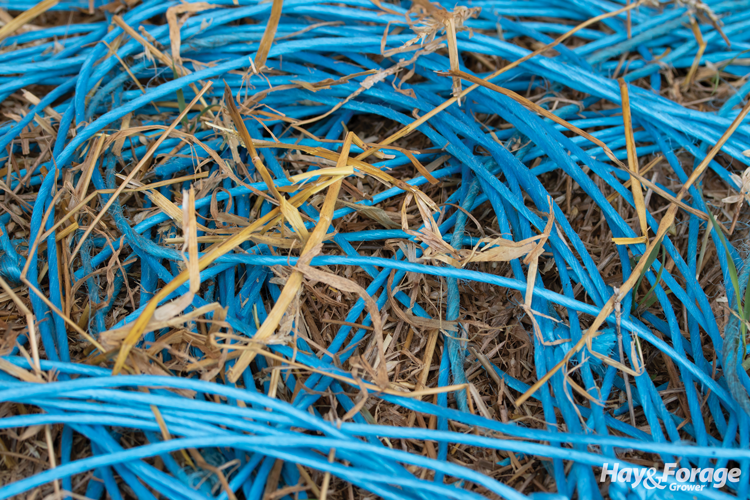
The offseason is a time of year when you can get unexpected phone calls and possibly a few visits from sales people who are trying to pedal their agricultural wares. After all, it’s the slow season for them, too. However, we often have our days already planned out. So, I’m a firm believer in scheduling a meeting with customers, and I expect my manufacturer sales reps to do the same with me.
Anything could be on the table when a salesperson pulls into your yard: seed, chemicals, fertilizer, twine, net wrap, plastic, and products that might fit the “snake oil” category. There are actually a few things on this list that are worth visiting during the fall and winter. Prepurchasing items can lead to some big savings in comparison to buying during the season.
In this issue’s column, I want to talk about input items that evoke a number of opinions: net wrap, twine, and plastic wrap. We all have the experience by now of finding the “best deal” available. After the purchase, we regret this decision due to the poor quality of a cheaper product. I once saw a stack of dry hay on the side of a field with no visible net wrap on any of the 70 bales in the row. When I asked the farmer what had happened, he went on a cussing tirade. He told me everything was fine the day they baled and moved bales to the edge of the field, but after sitting in the Georgia sun for four months, all the bales started breaking open because the net had deteriorated. Talk about a nightmare!
Know what you’re buying
There are various brands and grades of net wrap. It is important to do your homework and research the brands you are getting prices on. If you can examine the net wrap before you purchase it, that’s a big plus as well. You might be able to get by with a lower quality net when you are putting up baleage and wrapping it in plastic because it’s the latter that is holding the bale together. You just need enough net on the bale to get it from the baler to the wrapper. Also, I do not think that edge-cover net wrap does as much good when wrapping in plastic. In my mind, you are just wasting money on a 51-inch roll when a 48-inch roll would suffice.
When putting net wrap on dry hay or straw, it’s a different story. This is where the cheaper material can get you in trouble. You should take into consideration how many times you are going to handle these bales before they are fed. Also, where will they be stored and for how long? The answers to these issues will affect what net wrap you purchase and how many wraps should be put on a bale.
We’ve had some hay bales sold off our farm that had a spear stuck in them seven times before they made it to the cows. Needless to say, good-quality wrap is needed in that situation with several wraps on each bale. Another thing we found is that we preferred the 48-inch net wrap on bales stored inside versus a 51-inch product. This is mainly due to the cover edge always tearing off. We stacked our bales four-high on the flat, and when we took the stack down, the edge would tear and always be in the way.
The twine that binds
Twine can cause the same binding issues as net wrap, though in a different way. Most of the time you have trouble with cheaper twine while you are baling. This mainly translates to knotter issues, and on a hot day, that can make some tempers flare. We chose to always stick with a higher quality twine on our two-tie balers, and we also found that once we stepped up from 130 to 150 or 170 knot strength twine, we had fewer issues. This boils down to the knots not holding on the lower strength twine when the bale left the chamber.
This same problem can occur on big square bales. With dry hay and straw, you will tend to have fewer issues with a high-strength twine. You are simply not stressing the twine to its limit on each bale. Perhaps just as important, you are also not stressing your baler operator as much.
We have upgraded several of our customers to high knot strength twine and high-quality net wrap. Yes, it was more expensive, but all have said that they have had less downtime and better bales, so the few pennies more that it costs is well worth it.
Take time this offseason to research your net wrap and twine. Prices have settled a little bit compared to last year, so this may be a good time to upgrade, if needed. I think you’ll see and experience the difference.
This article appeared in the February 2024 issue of Hay & Forage Grower on page 21.
Not a subscriber? Click to get the print magazine.

